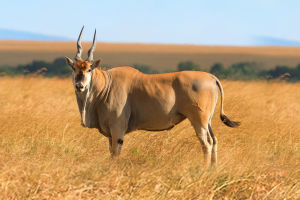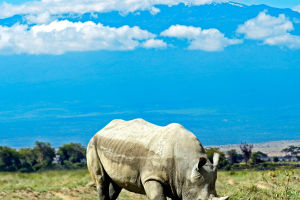Hello Lykkers! The tiger, a majestic and powerful creature of the wild, commands awe and respect. As one of the most iconic animals in the world, the tiger symbolizes strength, ferocity, and an enigmatic beauty.
The tiger gazing directly into the lens with piercing eyes against a stark black background captures the essence of this magnificent animal's solemn and commanding presence.
Conservation Status
Tigers are currently listed as an endangered species, with various subspecies at different levels of threat. Habitat loss, poaching, and conflict with humans have dramatically reduced tiger populations across their range. Conservation efforts are crucial to their survival, focusing on habitat preservation, anti-poaching measures, and raising public awareness about their plight.
Habitat and Behavior
Tigers are predominantly solitary animals, often requiring large territories to support their need for prey and to find mates. These majestic felines are native to diverse environments across Asia, from the snowy forests to the tropical forests of Indonesia. Their adaptation to various climates is a testament to their evolutionary success.
Importance in the Ecosystem
Tigers play a critical role in maintaining the health of the ecosystems in which they live. As apex predators, they help keep prey species' populations under control, which in turn maintains the balance between herbivores and the vegetation upon which they feed. This balance is crucial for the stability of the ecosystem, preventing overgrazing and ensuring a diverse range of plant and animal life thrives.
Cultural Impact
Tigers have a profound influence on the cultures of the countries where they are found. They are featured prominently in mythology, folklore, and are national symbols for various countries across Asia. Their image is often associated with power and dominance and used to evoke pride and a sense of mystery in national emblems and artwork.
Challenges to Their Survival
Despite their cultural reverence and conservation efforts, tigers face numerous challenges. Poaching for their beautiful pelts, body parts used in traditional medicine, and the ever-encroaching human development that reduces their natural habitat are the primary threats to their existence. These issues require international cooperation and strong local governance to address effectively.
The Call to Action
Efforts to save the tiger from extinction are a race against time. Support for tiger conservation has grown, but much more action is needed. Protecting tigers involves supporting habitat conservation projects, wildlife charities, and laws that enforce strict penalties for poachers and illegal traders.
The tiger is not just an animal; it is a symbol of the wild's untamed beauty and a reminder of the fragility of nature’s balance. Protecting this majestic creature is imperative for maintaining the health of ecosystems and for future generations to marvel at their grandeur and spirit.


